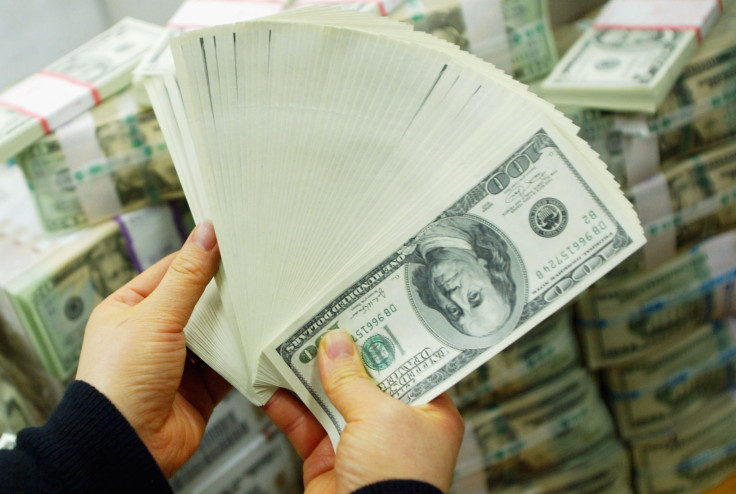Tax Code To Direct $2 Trillion To Programs That Disproportionately Benefit The Rich And Corporations

Federal lawmakers are once again deadlocked over end-of-the-year spending legislation to fund the government. But those annual appropriations bills aren’t the only way the government spends money. The tax code also serves as a spending tool -- and figures buried in a new congressional report show that in the next five years alone, more than $2 trillion will be spent on programs that disproportionately benefit the wealthy and large corporations.
The analysis from the Joint Committee on Taxation -- which is led by Rep. Kevin Brady, R-Texas, and Sen. Orrin Hatch, R-Utah -- focuses on the roughly $6.8 trillion that will be spent between 2015 and 2019 on special tax deductions, exemptions and exclusions. The single largest of such so-called “tax expenditures” is the $768 billion for the tax break for employer-sponsored healthcare plans -- a relatively equitable deduction that benefits people across many income levels. But an International Business Times review of the data shows that four of the next six largest tax expenditures funnel an outsize amount of federal largesse to the highest-income earners.
The second-largest tax expenditure outlined in the JCT report is the $689 billion that will be spent to finance a lower rate of tax on income earned through investments (as compared with income earned through wages). Under current law, those capital gains are taxed at a maximum 20 percent rate, in comparison with a top rate of 39 percent on other forms of income -- a situation that critics say effectively forces taxpayers to subsidize the reduced rate.
“Over the past 20 years, more than 80 percent of the capital gains income realized in the United States has gone to 5 percent of the people, [and] about half of all the capital gains have gone to the wealthiest 0.1 percent,” the Washington Post reported in 2011.
Using those estimates, the JCT figures suggest that in the next five years, the capital gains tax expenditure will deliver roughly $350 billion to the richest one-tenth of 1 percent of taxpayers -- or on average more than $2.5 million to each of the 136,000 taxpayers in that group. Some left-leaning advocacy organizations have pushed to have capital gains and wage income taxed at the same rate, but such proposals have not progressed in Congress.
The next-largest tax expenditure is the $563 billion that will be spent to permit American companies to avoid paying taxes on the income they make overseas. Under the law, companies with foreign subsidiaries can defer those tax payments indefinitely -- and earn interest or other investment income off such a deferral as long as they do not bring the money back to the United States. Corporations such as Microsoft and Apple have made headlines using this tax expenditure to shield tens of billions of dollars from taxes. The research firm Audit Analytics estimated in 2014 that more than $2 trillion in U.S. corporate profits are currently being held offshore. Congress may vote this week on legislation to extend some of the tax provisions helping American corporations shield their profits from taxes by keeping them offshore.
Other tax expenditures in the top 10 include the $419 billion to subsidize home mortgages and the $342 billion to subsidize citizens’ state and local income and sales tax payments (on top of another $184 billion that will be spent to subsidize local property tax payments). That combined $761 billion is the five-year cost of allowing taxpayers to deduct mortgage interest and local tax bills from their federal taxes. The benefits of those write-offs disproportionately benefit high-income earners.
According to the JCT report, 42 percent of the $72 billion worth of mortgage interest deductions in 2014 -- or more than $30 billion -- benefited Americans making more than $200,000 a year. That same year, 67 percent of the local tax deductions -- or $40 billion -- flowed to those same high-income earners. If those percentages stay constant over the next five years, the two write-offs will deliver more than $405 billion to taxpayers making more than $200,000 a year.
The regressive nature of the deductions stem, in part, from the fact that the income being written off would have normally been taxed at the higher federal income tax rates the wealthy are supposed to pay. In the case of the mortgage write-off, since the wealthy tend to buy more expensive homes than the poor, they glean far more money from the tax expenditure. A 2008 study by researchers at the University of Pennsylvania found that those making between $40,000 and $75,000 saved an average of $523 a year from the tax deduction. Those who made more than $250,000 saved an average of $5,459 each year from the same deduction.
In the case of the local-tax write-off, the wealthy earn more and therefore owe more local income tax -- and so again, the federal tax expenditure to subsidize those payments provides more benefits to the rich.
“Most of the big tax expenditures have an incredibly corrosive effect on tax fairness and would never pass muster if they were funded as direct-spending programs rather than tax breaks,” said Matt Gardner, executive director of the Institute on Taxation and Economic Policy, a Washington-based group that has pushed to end some tax expenditures. “If any federal government entity proposed a $72 billion housing subsidy that reserved almost half its benefits for those earning over $200,000 a year, they’d be rightly laughed out of town. But when it’s done through the tax code, policymakers can go years or even decades at a time without even having to defend the effectiveness of this spending. It’s a pernicious double standard.”
© Copyright IBTimes 2025. All rights reserved.






















